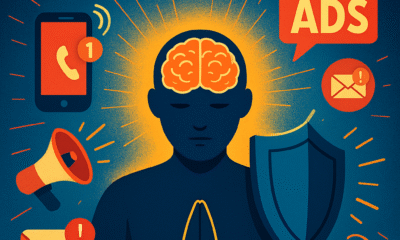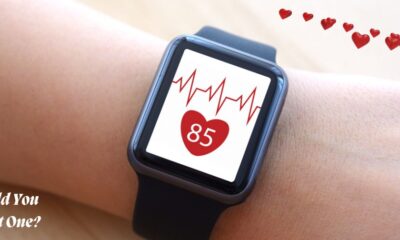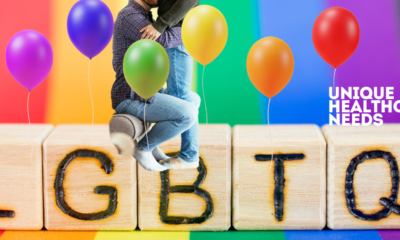Healthcare
Health Literacy: Understanding Your Healthcare

Health literacy is a vital component of public health, personal well-being, and community development, as it directly affects individuals’ ability to make informed decisions about their health. It is more than just the ability to read and understand medical jargon; it encompasses a broad range of skills needed to navigate the increasingly complex healthcare landscape. From understanding prescriptions and medical instructions to evaluating the credibility of health information online, health literacy empowers individuals to take charge of their health and advocate for their well-being.
Let’s explore the concept of health literacy, its importance, its challenges, and its implications for patients, healthcare providers, and society at large. How it influences healthcare outcomes, examine strategies to improve it, and investigate its role in bridging health disparities. By the end of this discussion, we will appreciate the profound impact of health literacy on the healthcare system and individual health outcomes.
Understanding Health Literacy
Health literacy, as defined by the U.S. Department of Health and Human Services, is “the degree to which individuals have the capacity to obtain, process, and understand basic health information and services needed to make appropriate health decisions.” In simpler terms, it is the ability to comprehend and use healthcare information to follow instructions, make decisions, and maintain or improve one’s health.
Health literacy is multidimensional, involving the ability to read, write, understand numbers, communicate effectively, and think critically. These skills are essential for comprehending written health materials, participating in medical discussions, and evaluating health information from various sources, including the media, family members, and healthcare professionals.
Key Components of Health Literacy
1. Functional Literacy: This involves basic reading and writing skills. Individuals need to be able to understand written health-related materials such as pamphlets, prescriptions, and health forms. Functional literacy is essential for tasks such as reading appointment slips, understanding the dosage instructions on medication bottles, or interpreting nutrition labels on food products.
2. Interactive Literacy: This goes beyond basic reading skills, involving the ability to engage in discussions about health, ask relevant questions, and actively participate in decision-making. Patients with interactive literacy can better communicate with healthcare providers, ensuring that they fully understand their diagnosis and treatment options.
3. Critical Literacy: This involves higher-order thinking skills that enable individuals to analyze and critically evaluate health information. Given the vast amounts of health information available, some accurate, some misleading individuals need to discern what is credible and relevant. This is particularly important in an age where misinformation about health, often spread via the internet and social media, can lead to harmful decisions.
4. Cultural Competency: An often-overlooked component of health literacy is understanding how culture, language, and beliefs shape an individual’s perception and response to healthcare information. Health literacy is influenced by the cultural context, and healthcare providers must consider cultural differences when communicating with patients.
The Importance of Health Literacy
Health literacy plays a pivotal role in enabling individuals to navigate the healthcare system effectively. Those with high levels of health literacy are better equipped to understand their health conditions, follow medical instructions, engage in preventive healthcare, and manage chronic diseases. Below are several reasons why health literacy is crucial.
1. Improved Health Outcomes
There is a well-established correlation between health literacy and health outcomes. People with higher health literacy levels tend to have better overall health outcomes. They are more likely to engage in preventive measures, such as vaccinations, cancer screenings, and healthy lifestyle practices. Additionally, they are more capable of managing chronic conditions like diabetes or heart disease, as they understand the importance of adhering to treatment plans and following medical advice.
In contrast, individuals with low health literacy often struggle to comprehend their health status and may misinterpret medical instructions. This can lead to medication errors, failure to adhere to prescribed treatments, and poor management of chronic diseases, which in turn exacerbates their health conditions.
2. Reduction in Healthcare Costs
Low health literacy is costly, both for individuals and the healthcare system. Research shows that individuals with limited health literacy are more likely to use emergency services, require hospitalization, and incur higher healthcare expenses. They may not fully understand when it is appropriate to seek emergency care versus when to schedule a routine visit to a primary care provider, leading to unnecessary emergency room visits. By improving health literacy, healthcare systems can reduce unnecessary healthcare utilization and improve cost efficiency.
3. Patient Empowerment and Autonomy
Health literacy empowers individuals by giving them the knowledge and confidence to actively participate in their healthcare decisions. It allows patients to ask informed questions, weigh the risks and benefits of different treatment options, and take control of their health. This is especially important in the context of patient-centered care, where shared decision-making between healthcare providers and patients is a key component. Empowered patients who understand their health information are more likely to follow through with their treatment plans and have better health outcomes.
4. Promotion of Preventive Health Behaviors
Health literacy encourages the adoption of preventive health behaviors, such as maintaining a healthy diet, engaging in physical activity, avoiding smoking, and attending regular health screenings. These behaviors are fundamental to reducing the risk of developing chronic diseases and improving long-term health outcomes. By understanding health risks and the importance of preventive care, individuals can make healthier choices and lead a more proactive approach to their health.
Challenges to Health Literacy
Despite its importance, health literacy remains a significant challenge for many individuals and populations. Several factors contribute to low health literacy, including socioeconomic status, education level, age, language barriers, and healthcare complexity. Understanding these barriers is critical to developing strategies to improve health literacy.
1. Socioeconomic and Educational Disparities
Lower-income individuals and those with lower educational levels often experience difficulties with health literacy. They may have limited access to quality education, which affects their ability to develop reading, writing, and critical thinking skills. Furthermore, they may lack access to healthcare resources or be unaware of how to navigate the healthcare system.
2. Cognitive Decline with Age
Older adults are at a higher risk for low health literacy due to cognitive decline, sensory impairments, and decreased ability to process complex health information. As individuals age, they may experience difficulties in understanding new medical terms or managing multiple medications. Given that older adults are more likely to have chronic health conditions, low health literacy in this population can lead to poor health outcomes and increased hospitalization rates.
3. Language Barriers
In multicultural societies, language barriers present a significant obstacle to health literacy. Non-native speakers may struggle to understand healthcare instructions written in a language they are not proficient in. Furthermore, medical terminology can be difficult to translate, and cultural differences may affect how individuals interpret health information.
4. Complexity of the Healthcare System
Healthcare systems, especially in countries like the United States, can be incredibly complex and difficult to navigate. Patients are often confronted with intricate medical jargon, insurance details, and a myriad of specialists and healthcare providers. Understanding how to access healthcare services, interpret insurance coverage, and communicate effectively with multiple healthcare providers can be overwhelming, particularly for those with limited health literacy.
5. Misinformation and Health Literacy in the Digital Age
With the rise of the internet and social media, individuals have unprecedented access to health information. While this has the potential to enhance health literacy, it also poses a significant challenge due to the spread of misinformation and false health claims. For example, during the COVID-19 pandemic, misinformation about vaccines, treatments, and preventive measures proliferated online, leading to confusion and poor health decisions. Individuals with low critical health literacy may have difficulty distinguishing between credible sources and unreliable information, exacerbating public health challenges.
Strategies to Improve Health Literacy
Given the numerous barriers to health literacy, concerted efforts are needed to improve it at both the individual and systemic levels. Improving health literacy is not solely the responsibility of patients; healthcare providers, educational institutions, and policymakers all play a role in fostering an environment where individuals can make informed health decisions.
1. Simplifying Health Communication
Healthcare providers can take steps to simplify communication with patients. This includes using plain language rather than medical jargon, providing clear written instructions, and verifying that patients understand their health information. The “teach-back” method is an effective communication strategy, where healthcare providers ask patients to repeat the information in their own words to confirm understanding. Additionally, providing educational materials in multiple languages and formats (e.g., visual aids, videos, and infographics) can enhance comprehension for individuals with varying levels of health literacy.
2. Integrating Health Literacy into Education
Improving health literacy should start at an early age. Schools can integrate health literacy into the curriculum by teaching students about basic health concepts, the importance of preventive care, and how to navigate the healthcare system. Health education can also emphasize critical thinking skills, enabling students to evaluate health information and make informed choices about their well-being.
3. Developing Culturally Competent Health Education
Given the diversity of populations, health education must be culturally competent and tailored to meet the needs of different communities. Healthcare providers should consider patients’ cultural backgrounds, beliefs, and practices when communicating health information. Moreover, health education campaigns should be designed with cultural sensitivity in mind, using messages that resonate with the target population.
4. Improving Access to Health Information
To improve health literacy, access to accurate and reliable health information must be expanded. Public health campaigns should disseminate trustworthy health information through various channels, including community centers, schools, social media, and traditional media outlets. Governments and health organizations can create user-friendly websites that provide clear, evidence-based information on health topics, medications, and treatments.
5.Leveraging Technology for Health Literacy
Technology can be a powerful tool for improving health literacy. Mobile health apps, telemedicine services, and online health portals allow individuals to access information, monitor their health, and communicate with healthcare providers. However, digital health tools must be designed with user-friendliness in mind, ensuring that they are accessible to people with varying levels of digital literacy.
6. Training Healthcare Providers
Healthcare providers need training on how to communicate effectively with patients who have low health literacy. This includes learning how to assess patients’ comprehension, adapt communication styles, and provide support to those who struggle to understand health information. Medical schools and continuing education programs should incorporate health literacy training into their curricula to equip future healthcare professionals with the skills necessary to address this issue.
Health Literacy and Public Policy
Public policy can play a critical role in promoting health literacy. Governments and healthcare organizations can implement policies that make healthcare more accessible and patient-centered. For instance, the Affordable Care Act in the United States includes provisions to improve health literacy by mandating the use of plain language in healthcare communications. Additionally, public health campaigns funded by governments can raise awareness about the importance of health literacy and provide resources to improve it.
The Future of Health Literacy
As healthcare continues to evolve, health literacy will remain a crucial determinant of health outcomes. With the increasing complexity of medical care, the proliferation of digital health technologies, and the growing amount of health information available, individuals will need stronger health literacy skills to navigate the healthcare landscape successfully. Additionally, the importance of health literacy in addressing health disparities will become even more apparent, as efforts to close the gap between different socioeconomic and cultural groups will require targeted interventions that promote equitable access to health information.
Healthcare providers, educators, policymakers, and individuals all have a role to play in advancing health literacy. By improving health literacy, we can create a more informed, empowered, and healthy society where individuals are equipped with the tools they need to make sound health decisions, leading to better health outcomes for all.
Conclusion
Health literacy is a cornerstone of effective healthcare delivery and public health. It encompasses more than just the ability to read and understand health-related information; it involves critical thinking, communication skills, and the capacity to navigate the healthcare system. High levels of health literacy are associated with better health outcomes, lower healthcare costs, and greater patient empowerment, while low health literacy leads to poor health management and increased healthcare utilization.
The challenges to health literacy are multifaceted, ranging from socioeconomic disparities and language barriers to the complexity of the healthcare system and the spread of misinformation. However, by simplifying health communication, integrating health literacy into education, developing culturally competent health education, improving access to health information, leveraging technology, and training healthcare providers, we can address these challenges and promote health literacy at both the individual and societal levels.
-

 Home and Garden6 days ago
Home and Garden6 days agoTransform Your Space: A Guide to Minimalist House Interior Design in 2025
-

 Home & Family7 days ago
Home & Family7 days ago10 Essential Cleaning Hacks for Bathroom Surfaces You Need to Try
-

 Health & Fitness7 days ago
Health & Fitness7 days agoDiscovering the Best Multivitamin for Women Over 40: Essential Nutrients for Optimal Health
-

 Automotive5 days ago
Automotive5 days agoUnlocking Performance: Why the HP Spectre x360 is the Ultimate 2-in-1 Laptop for 2025
-

 Health & Fitness6 days ago
Health & Fitness6 days agoDiscover the Best Multivitamin for Women Over 40: A Comprehensive Guide to Optimal Health
-

 Crime7 days ago
Crime7 days agoExploring the Most Anticipated New True Crime Documentaries of 2025
-

 Business7 days ago
Business7 days agoMaximize Your Earnings with American Express High Yield Savings Accounts in 2025
-

 Education6 days ago
Education6 days agoUnlock Your Potential: Discover the Best Udemy Free Courses of 2025





































